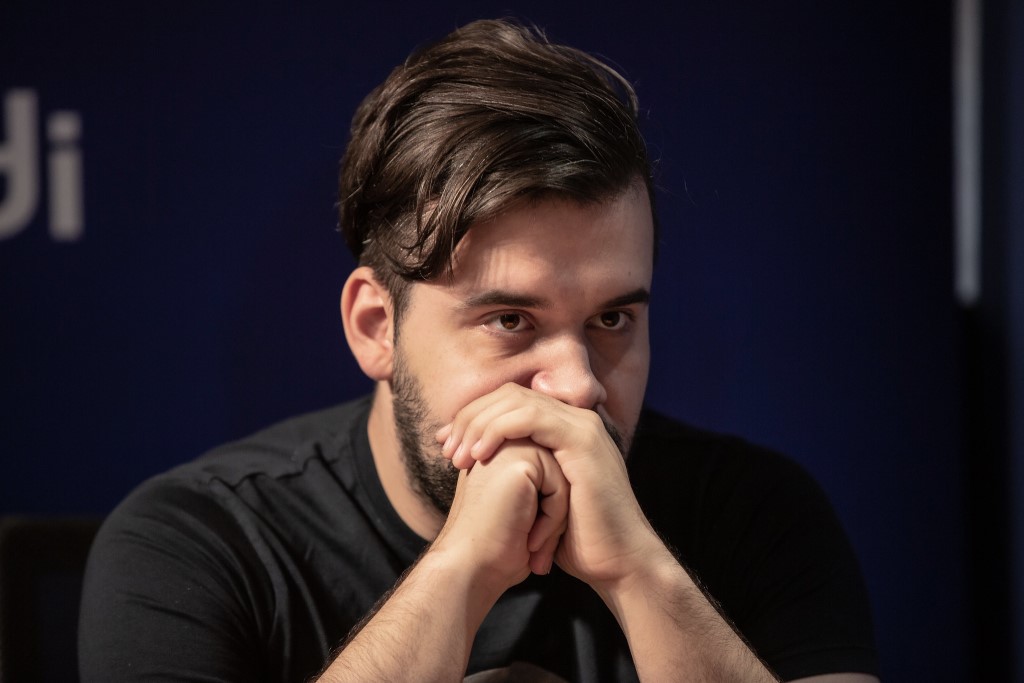“A pretty good, clean day”
World Champion Magnus Carlsen and eleven more of the world's best chess players are competing in the Chessable Masters by chess24, the third event in the $1 million Magnus Carlsen Chess Tour, taking place from June 20 to July 5.
The first two semifinalists of the Chessable Masters reached the penultimate stage of the knockout by obtaining convincing wins over Fabiano Caruana and Vladislav Artemiev. In fact, both Magnus Carlsen and Ian Nepomniachtchi won their matchups after playing the lowest amount of games possible — six in total.
Scoring back-to-back 2½:1½ victories means they will get to the semis rested and confident. Starting Tuesday, Carlsen will face the winner of Ding Liren vs Hikaru Nakamura, while Nepomniachtchi will play the winner of Anish Giri vs Alexander Grischuk.
Talking to the commentators after his quick win on Saturday, Carlsen concluded:
I gotta say it was a pretty good, clean day.
This is the third event of the Magnus Carlsen Tour, which uses a rapid time control of 15 minutes for the game and 10-second increments from move one. When asked about his preference of formats, Carlsen responded:
I’ve sort of always found rapid chess the most difficult, because it’s such a tricky hybrid between classical and blitz chess. [...] To balance them is very, very hard. But I think it’s also a very entertaining form of play.
Indeed, it felt like the world champion was having fun during his match against Caruana, who certainly did not show his best form in the quarterfinals — Carlsen was unyielding in making the most of his colleague’s uninspired performance.
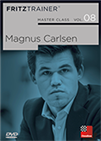 Scarcely any world champion has managed to captivate chess lovers to the extent Carlsen has. The enormously talented Norwegian hasn't been systematically trained within the structures of a major chess-playing nation such as Russia, the Ukraine or China.
Scarcely any world champion has managed to captivate chess lovers to the extent Carlsen has. The enormously talented Norwegian hasn't been systematically trained within the structures of a major chess-playing nation such as Russia, the Ukraine or China.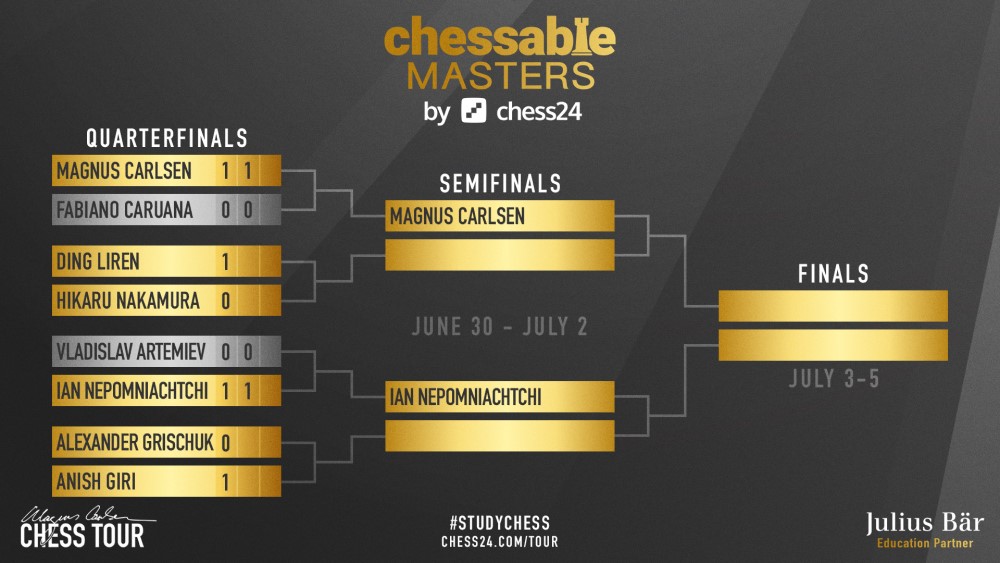
Carlsen 2½:½ Caruana
| Mini-match #2 |
Game 1 |
Game 2 |
Game 3 |
| Magnus Carlsen |
½ |
1 |
1 |
| Fabiano Caruana |
½ |
0 |
0 |
After Caruana did not hesitate to enter a rook endgame a pawn down in game 1 with white (the game finished drawn), Carlsen obtained a major advantage in the second encounter as early as move 19:
Although White does not have a huge material edge or a clear mating attack, Carlsen later noted that he already felt he would win the game from this position. White is better developed and has a strong bishop on the long diagonal to boot. The game continued 19...Ne7 20.Rc7 Nf5 21.Rg4 h5 22.Rg6:
White transferred his rook to the strong g6-square, exerting huge pressure on the g7-pawn. Black’s f6-pawn was lost in the next move, and Carlsen swiftly converted his advantage into a full point.
Pressed to win, Caruana was over-ambitious in game 3, when he got a good position out of the opening for the first time in the match. By move 34, Carlsen had already managed to equalize though:
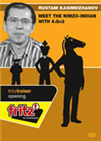 Rustam Kasimdzhanov, the FIDE World Champion in 2004, has been extremely successful with the Nimzo-Indian with 4.Qc2 with White and with Black. In over 4 hours of video, Rustam Kasimdzhanov explains all the important ideas, strategies and tricks helped by sample games in which the white side is represented, e.g., by Kasparov, Anand, Kramnik and Ivanchuk as well as the author himself.
Rustam Kasimdzhanov, the FIDE World Champion in 2004, has been extremely successful with the Nimzo-Indian with 4.Qc2 with White and with Black. In over 4 hours of video, Rustam Kasimdzhanov explains all the important ideas, strategies and tricks helped by sample games in which the white side is represented, e.g., by Kasparov, Anand, Kramnik and Ivanchuk as well as the author himself.
In another situation, Caruana would have probably gone 34.h3 here, giving Black a chance to draw by infiltrating with his queen and getting a draw by perpetual check. The American played 34.Ke2 instead, keeping the game alive. Carlsen took advantage of his opponent’s recklessness and went on to score a deciding 50-move win.
Select an entry from the list to switch between games
Nepomniachtchi 2½:½ Artemiev
| Mini-match #2 |
Game 1 |
Game 2 |
Game 3 |
| Ian Nepomniachtchi |
½ |
1 |
1 |
| Vladislav Artemiev |
½ |
0 |
0 |
The exact same results as in Carlsen vs Caruana were seen in the all-Russian matchup, with Nepomniachtchi getting two wins to clinch the match after the first game finished drawn.
Artemiev needed to win the second set to stay alive and, instead of playing it cool, he decided to play offbeat openings against his famed opponent. The experiment was not a success as, although he got good positions in the early middlegames, Nepomniachtchi outplayed him when things got complex.
Nepo’s 20th move in game 3 was the biggest highlight of the day:
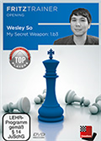 Meanwhile, 1.b3 has also found its way into the practice of today's world elite, and now finally a modern top ten player has taken on the subject for ChessBase: none other than Grandmaster Wesley So!
Meanwhile, 1.b3 has also found its way into the practice of today's world elite, and now finally a modern top ten player has taken on the subject for ChessBase: none other than Grandmaster Wesley So!
White’s 20.Ng3 was a blunder, but Black has only one move that gives him a massive advantage. Seeing Nepomnaichtchi play the correct 20...Bb1 definitely impressed commentator Peter Svidler, while Carlsen, who was being interviewed at the moment, commented:
If you would pick one player in the field to actually find this move, it would be Ian.
Artemiev cannot capture the bishop due to 21...Qd3+, so was forced to go for the awkward 20...Kg1 - 21...Nf1 sequence. Nepomniachtchi had a massive advantage though, and only needed six more moves to convert it into his second win of the day.
Select an entry from the list to switch between games
Links
